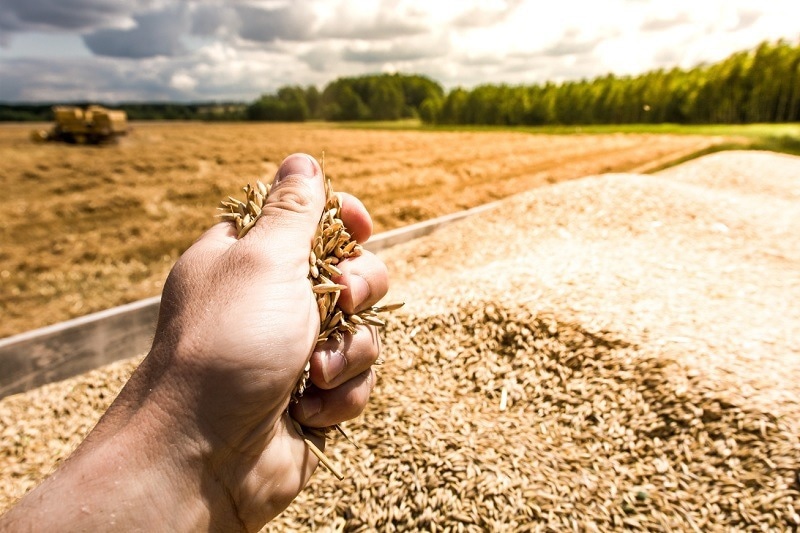A novel approach developed by researchers at the University of Birmingham could be used to cover the roots of plants with environments that support bacterial development, resulting in stronger, healthier plants and increased agrarian yields in agriculture.
 The polymers are designed to act as a scaffold, ‘seeding’ the formation of a microorganism-polymer complex, which is crucial in the early stages of a plant’s life when the seedling is in a race against time to reach self-sufficient growth before the nutrients and energy stores in the seed run out. Image Credit: University of Birmingham.
The polymers are designed to act as a scaffold, ‘seeding’ the formation of a microorganism-polymer complex, which is crucial in the early stages of a plant’s life when the seedling is in a race against time to reach self-sufficient growth before the nutrients and energy stores in the seed run out. Image Credit: University of Birmingham.
In nature, groups of soil microbes, like fungi, bacteria, viruses, etc., and seedling roots create symbiotic connections and exchange nutrients that promote the growth of both the plant and the microbes.
In the early stages of a plant’s existence, when the seedling is in a rush to achieve self-sufficient development well before nutrients and energy stores in the seed run out, this is very important.
A team led by Dr. Francisco Fernandez-Trillo from the University of Birmingham’s School of Chemistry and Dr. Tim Overton, an applied microbiologist from the School of Chemical Engineering, developed novel synthetic polymers that encourage the growth of these bacterial communities in a manner that mimics the natural process known as biofilm formation.
A biofilm is a carefully planned population of bacteria that is held together by a matrix of biological polymers that creates a safe microenvironment.
A series of acylhydrazone-based polymers were synthesized as a consequence of the researchers’ four-year collaborative project on the interactions of polymers with bacteria.
These innovative polymers were created to function as an adhesive scaffold, “seeding” the development of a microorganism-polymer complex to start and accelerate the production of biofilms.
Once the biofilm has been created, the bacteria shift to a self-sufficient, self-organizing community and create their own matrix to facilitate the exchange of nutrients and water as well as the release of waste.
The Midlands Integrative Biosciences Training Partnership of the Biotechnology and Biological Sciences Research Council (BBSRC) provided funding for the research.
Pavan Adoni and Omar Huneidi, Ph.D. students, were involved. They later expanded the studies demonstrating how the polymers aggregate bacteria and enhance biofilm development.
They demonstrated that the process is entirely reversible and that the biofilm can be removed by altering the environment. In 2022, the findings from these tests and other research will be released.
We anticipate that the polymer will ultimately be used as a seed coating, perhaps in conjunction with bacteria such as B. Subtilis, which is naturally present in soil, increases the stress tolerance of plants, and is currently used as a soil inoculant.
Pavan Adoni, PhD Student, University of Birmingham
Adoni added, “We envisage a more targeted approach that only treats the seed, so that when it germinates the bacteria are ready to grow in the safe harbor environment provided by a micro-organism polymer complex. Ultimately this should result in stronger plants, which grow more quickly, and have greater resilience to disease.”
In an effort to enhance the growth of a biofilm with any micro-organism, together with those that can yield or deliver chemical or biological molecules, the University of Birmingham Enterprise filed a broad-based patent application encompassing the novel polymers, the technique for forming the biofilm, and the method of polymer cleaving.
The patent has since been licensed to the specialized life science firm PBL Technology, which supports, defends, and invests in discoveries arising from global public research sources. Crop genetics, crop treatments, precision agriculture, promoters, and R&D tools are just a few of the agricultural technologies offered by PBL.
Journal Reference:
Chen, J., et al. (2022) Toward accurate and efficient dynamic computational strategy for heterogeneous catalysis: Temperature-dependent thermodynamics and kinetics for the chemisorbed on-surface CO. Chinese Chemical Letters. doi:10.1016/j.cclet.2022.03.080.